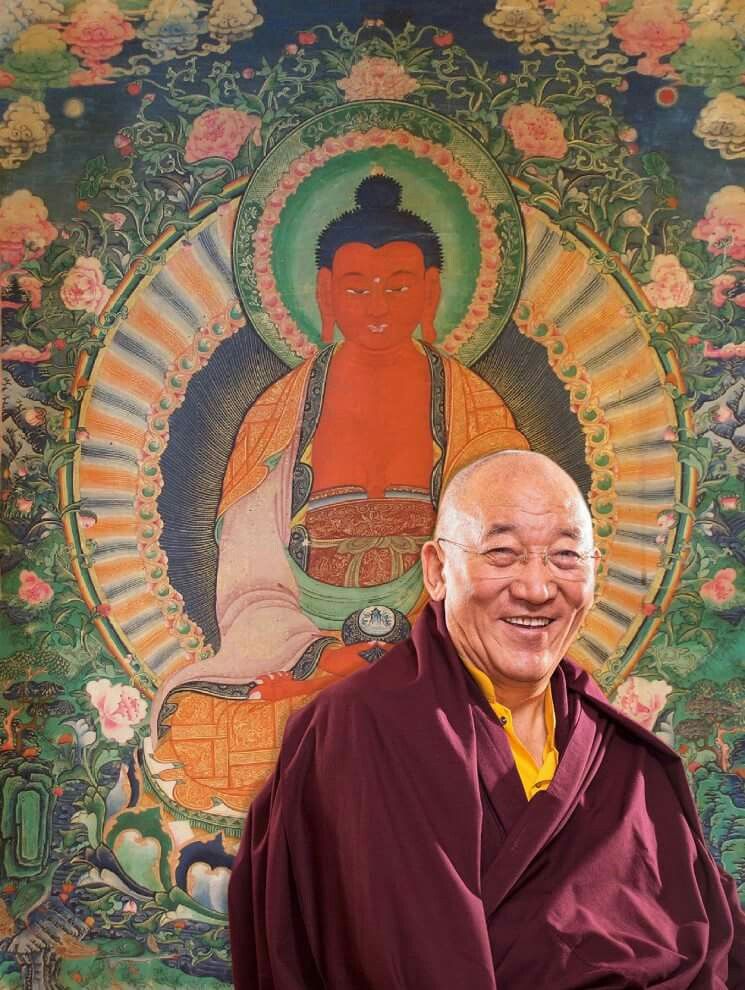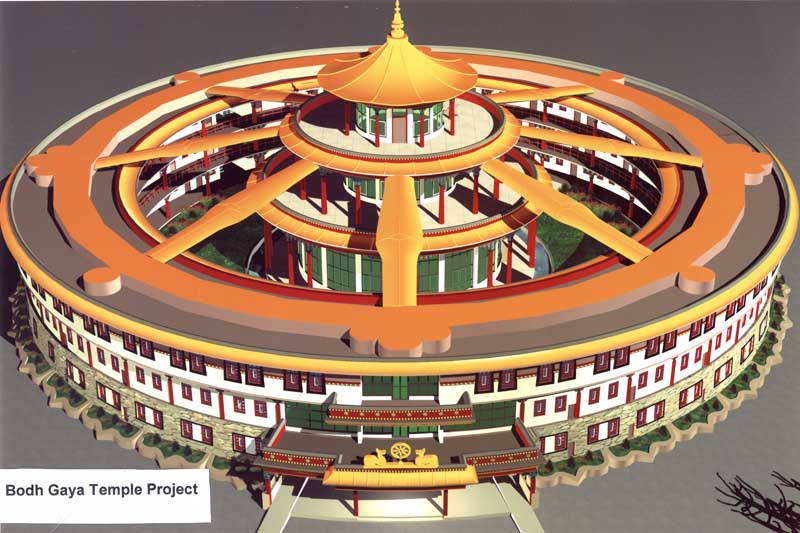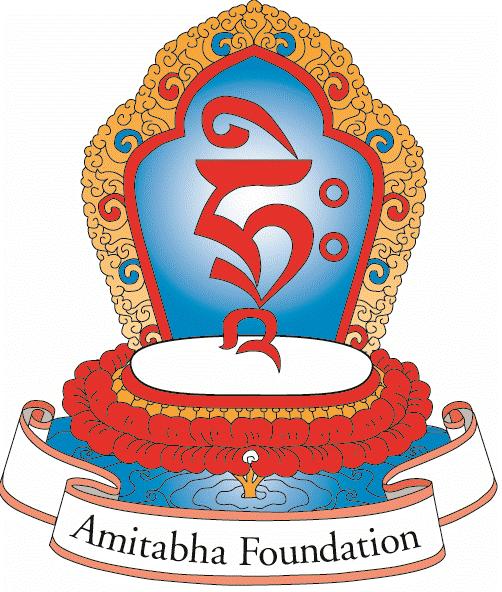
His Eminence Chöje Ayang Rinpoche
Ayang Rinpoche was recognized at a young age by a delegation of high lamas , including the Sixteenth Gyalwang Karmapa Rangjung Rigpe Dorje and Yongzin Jabra Rinpoche, as the wisdom incarnation of Terton Rigzin Choegyal Dorje. He lived for five years at Namdrol Ling monastery in Bylakuppe, India, when he first came to India. He then started to build his Thupten Shedrub Jangchub Ling monastery, also in Bylakuppe.
The core of Rinpoche’s vision is compassionate activity (bodhichitta) undertaken from pure motivation and supported by strong practice. These three themes — compassionate activity, pure motivation, and strong practice are woven through all of Rinpoche’s talks, activities, and directions. The three are not separate and one gets a strong sense that each supports, even enables the others. Without all three, there is an imbalance.
Ayang Rinpoche is considered to be the world’s living Phowa master. A lineage-holder of both the Nyingma and Drikung Phowa he continues the unbroken line of succession of the Drikung Phowa lamas from Buddha Vajradhara.
H.E. Palchen Galo Rinpoche
Palchen Galo Rinpoche was born in the land of Tsanke Theu, located in the east of Yarmo Thang, in the district of Minyag, in lower Kham, one of Tibet’s three main parts (Central Tibet, Kham and Amdo). He was born as the son of the great spiritual teacher, Ga Sherab Tseg, Master of Abhidharma, who was his father, and his mother was NyangsaTshetrul. At birth, he was named Jossey Gyamtso.
As a child, he had exceptionally sharp intelligence and great wisdom and because of this, his father taught him the Dharma at the age of 7. By the age of 17, he had completely mastered the Abhidharma teachings. When he reached the age of 20, he received the three degrees of ordination all at once, from Lama Wangten who was a student of the spiritual master, Ngog Lotsawa, as well as the teachings of Vinaya, Madhyamika philosophy and Valid Cognitions.

The Drikung Charitable Society & Amitabha Foundation
Vehicles of charitable activity, founded by H.E. Chöje Ayang Rinpoche
Today, Rinpoche has created four inter-related types of centres:
- Monasteries in South India and Tibet,
- A Phowa teaching centre in Bodhgaya,
- Retreat centres in Kathmandu, Nepal, and India; and
- Amitabha Foundation Centres throughout the world.
The core of Rinpoche’s vision is compassionate activity (bodhichitta) undertaken from pure motivation and supported by strong practice. These three themes — compassionate activity, pure motivation, and strong practice are woven through all of Rinpoche’s talks, activities, and directions. The three are not separate and one gets a strong sense that each supports, even enables the others. Without all three, there is an imbalance.
When asked which of the three is MOST important, Rinpoche replied, “…compassionate activity is at the heart of our practice. We can’t ignore it. It is absolutely vital.”

